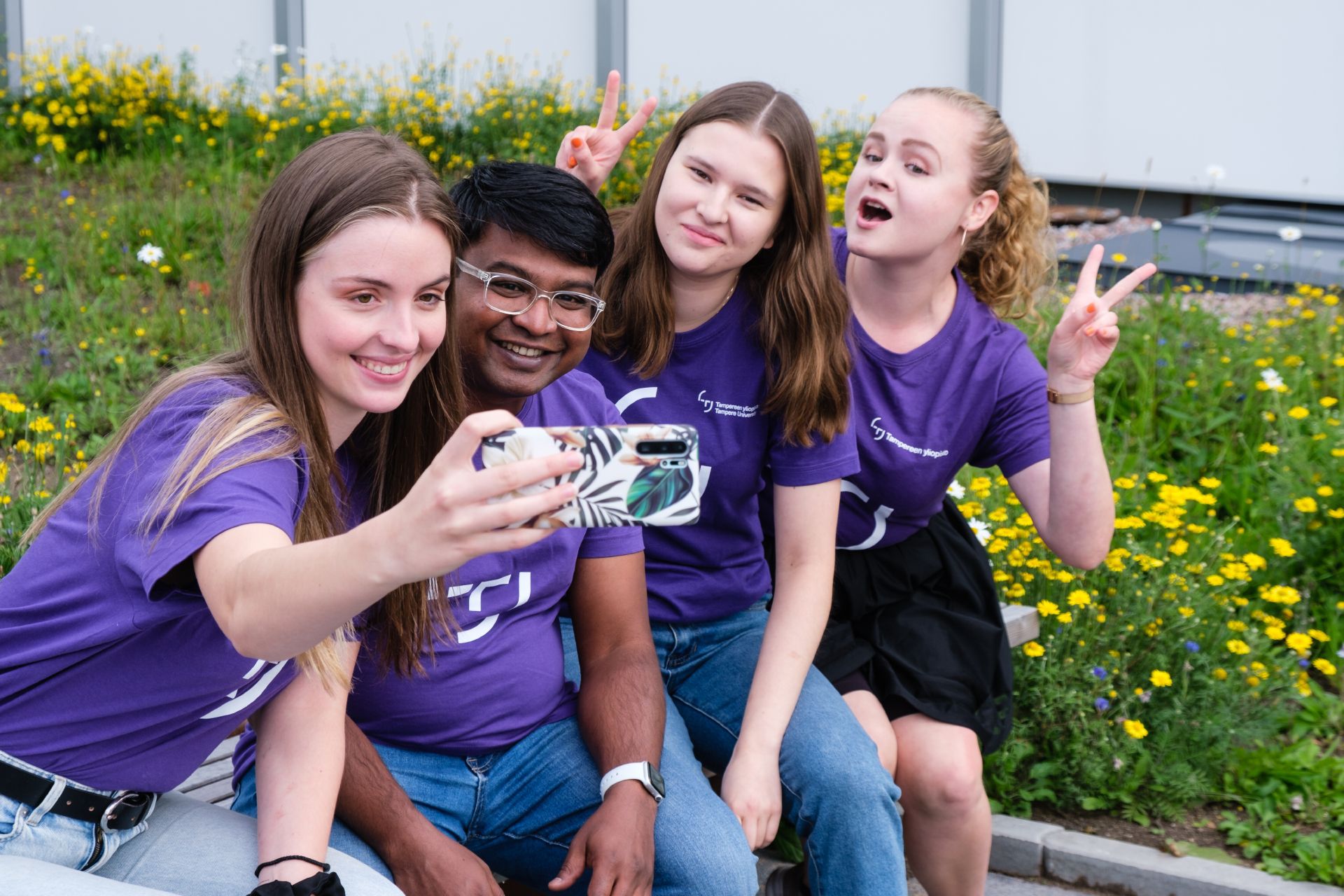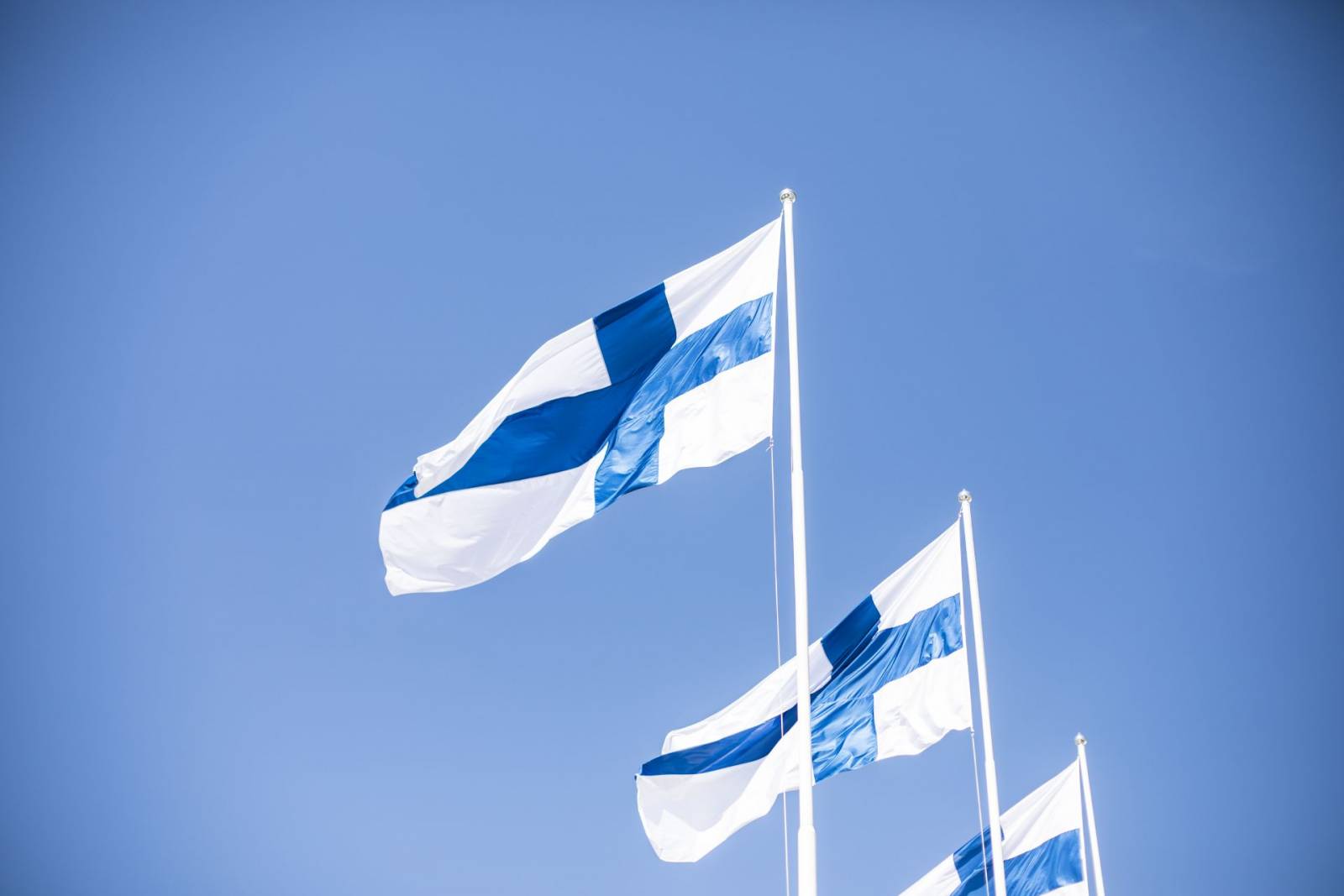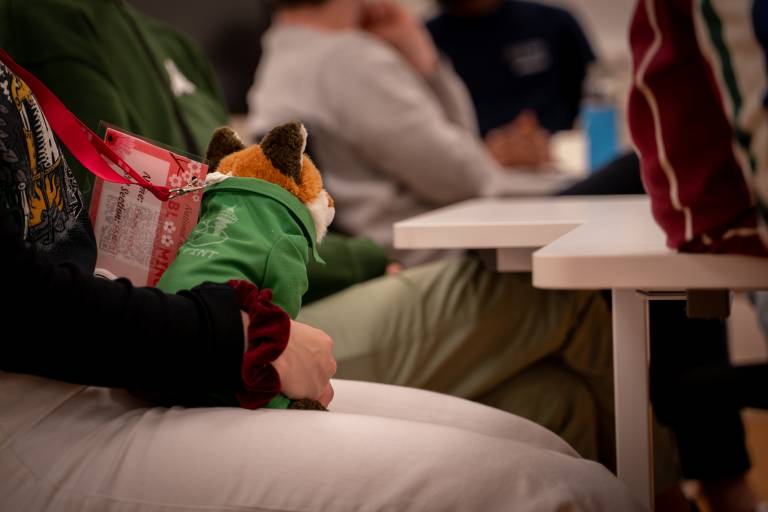The official Independence Day festivities usually commence with the raising of the Finnish flag on Tähtitorninmäki, ‘Observatory Hill’, in Helsinki. A religious service is held at Helsinki Cathedral, and both official and private visits are made to the war memorials and to the graves of those fallen in wars.
The president awards medals and honours to officials and common citizens both, and declares military promotions. Many towns have torch cavalcades which consist mainly of university students. These are quiet and dignified events traditionally circling the centre of the town. The students of Tampere are having a parade too.
The Independence Day has always had another critical side too. Protests, performances and other events aim to gain popularity and publicity criticising either the festivities or the state of the country. The most known ones take place outside the presidential palace during the president’s Independence Day reception, the most known and loved party of the year. While freedom of speech and protesting are civil rights, in this post I concentrate on the more traditional ways of celebrating Finnish independence.
Party like a Finn
It’s safe to say that a general celebration of Finnish Independence Day is calm, relaxed and passive. The spotlight is reserved for the heads of states and war veterans. Tampere, for example, invites local war veterans for Independence Day lunch. Most Finns greet this public holiday by lifting their feet up and securing a comfortable spot on the sofa. If you want to take a full experience of just how comfortable a party can get, here’s my scheduled Independence Day guide for you.
Coffee
Almost all the Finns start their morning with it, and today is not an exception. On the contrary, on festive occasions, the sound of brewing coffee fills the kitchens even more often. This is an underlying form of celebration in Finnish culture: for example, when a Finn wins a medal in the Olympics, they get the high honour of sipping mitalikahvi, medal coffee. I, however, remind you to drink responsibly.
Find that TV-guide and schedule the day
As mentioned before, you can participate in the festivities from your sofa, but make sure you know exactly when things are happening. There are three annually repeating events you need look up, namely: the military parade, the movie Tuntematon sotilas, ‘the unknown soldier’ and, finally, and most importantly, the President’s Independence Day reception. The national television, YLE, broadcasts traditionally all three, as well as the Liturgical celebration from Helsinki cathedral. This year’s schedule can be found for example from here. All the other events of this eventful day must be planned accordingly.
Independence Day parade
The annual Independence Day parade is held this year in Tampere (more information at the end of the post). YLE broadcasts it partly live at 12.55 and as a summary at 17.10. More than 1300 people and over 50 vehicles are expected to be part of the parade troops.
Tuntematon sotilas
Although the movie Tuntematon sotilas, based on a book under the same name by Väinö Linna, has been filmed three times, the first one from the year 1955 remains the most loved one. It’s common to hear people refer to it as ‘the real’, or ‘proper’ version. The story follows a company during the war of 1941–44, known in Finland as ‘the Continuation war’, as it followed the Winter war of 1939. Tuntematon sotilas marches to the stage men from all around Finland, with different dialects, beliefs, statuses, opinions and personalities. They seek to survive in the mad world of warfighting together despite their differences. Allegedly, both the book and the movie have had a huge impact in uniting and healing the nation after the devastating wars.
Don’t forget to eat!
While Finns might not have a fixed menu for their Independence Day, it’s definitely important to eat well. As the occasion pleads, all kinds of local and national products are preferred. As in what and where, you’ll find everything from many-course-fine-dining to throw-it-together at home. What tends to apply is that, like all festive meals, it’s best when shared – the more the merrier!
For decades, Hursti family has organised an Independence Day lunch for the poor in Helsinki. Other organisations do similar things around Finland.
Light two candles
On Independence Day you’ll see two candles lit on the windowsill of all the houses. This tradition goes back centuries ago when candles where lit to celebrate the birthdays of the then ruling party: the monarchs of Sweden. Later, when Russia seized command of Finland, the tradition was adapted to celebrate the emperor’s birthday. Something as innocent and beautiful as candlelight got radical toward the end of the 19th century. First, the candles were lit on national poet Runeberg’s day to oppose the Russian rule. Later, when Finland quietly sent young men to Germany for military training, the two lit candles on a window would signify a safe house. These men were trained in hopes of forming a national military to fight for Finnish independence. As luck would have it, the socialist revolution gave Finland another non-violent way out in 1917.
Yet, the candles remain as an independence symbol. They are most commonly lit from six to eight in the evening. Why two, you might ask. Well, one and three are odd numbers and would have made the window look asymmetric. Four, on the other hand, would have already been quite a waste! You got to remember it was rags to riches for Finland… although, it became clear that the obsessive eye for details is what led to some fame in designing later in the century.
The Presidential reception
Now the moment we have all been waiting for: the Presidential Reception, or Linnan juhlat , ‘a castle party’, in short! The tradition started in 1919 and took several forms before setting to its ball-natured form. The media has been involved since the early days. In the 30’s, short movies were made and played before feature films in the cinemas. Journalists were allowed in 1949 and the first television broadcast took place in 1967. From 1983 onwards, the reception has been broadcasted live.
Nowadays, about 1800 people are invited annually, including statespersons, politicians, diplomats, religious leaders and, naturally, war veterans, but also cultural persons and athletes, and common people, who the president has either met during the year touring Finland or has seen fit to be honoured for some other reason. Commonly, the President states a theme for the reception each year and this shows in the invitees.
While being invited to the reception is considered a great honour, people at home enjoy it greatly too. The broadcast gathers annually over 2 million people in front of their TVs, making it one of the most-watched shows of the year. Recently, YLE has even introduced a talk show type show to prepare people for the actual event.
The most popular segment is the entrance of the guests, a.k.a the handshake. The president greets each invitee personally by shaking their hand. This leads to long queues that Finns find surprisingly entertaining. Commentators identify guests from the queue, talk about their achievements and relationships with the host. Women’s dresses are evaluated, introduced and explained. You can even find applications and polls online to vote for your favourite! What used to be office gossip the following day has been taken to the next level.
The reception goes on for hours and people at home traditionally have the TV open through it all. After the handshake, line festivities include music and dance, food and punch and interviews with the guests. The favourite question is “What does independence mean to you?” Answers, as well as the preparation for it, vary.
At home, people eat, drink, chat with each other, and talk about the dresses and how much this and that person has gained weight. When enough is enough, the TV is turned off. You’ve lived an eventful day without all that hassle and stress. Finland is a year older, and you have earned a good night’s sleep.
The active option
Maybe sitting inside through the whole day sounds too depressing or just a waste of time? This year, everyone in Tampere is in for a treat. The aforementioned military parade starts already at 9 o’clock in the morning with a visit to the cemetery of Kalevankangas. The whole program can be viewed here.
The military parade is not the only happening in town. Tampere Hall hosts two events. Traditional children’s ball is held from 14–17 o’clock. The program consists of dance performances and art shops, and of course a possibility for everyone to take the floor themselves. The Independence Day concert is held at 15 o’clock and features Jean Sibelius’, the nation composer’s, work.
From five onwards, people will gather in Frenckell square for speeches, music and fireworks. The happening will cause all kinds of changes to the traffic in the centre. People are also reminded to arrive early if they wish to secure a good spot. More on artists, programs and overall happenings can be found here (in Finnish).
It’s no coincidence that the festivities end rather early: how’re we supposed to make it home to watch the handshake otherwise!?
– Mónica






